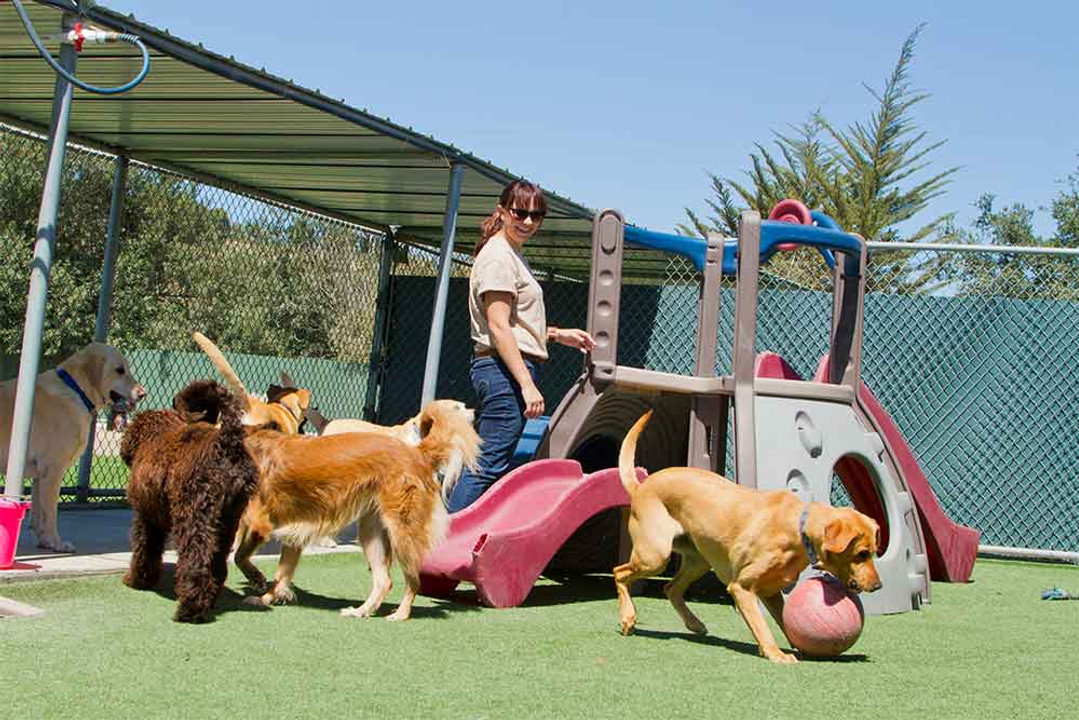
How to Transition Your Pet to a New Dog Boarding Facility in Las Vegas
Finding the right dog boarding facility is crucial for ensuring your pet’s well-being when you need to be away. A suitable boarding facility offers a safe, comfortable environment where your dog can thrive. However, transitioning to a new facility can be challenging. You may worry about how your pet will adjust to unfamiliar surroundings and new caregivers. Pets often experience anxiety during changes, and so do their owners. This article provides actionable steps to help you navigate the transition smoothly, ensuring a positive experience for both you and your furry friend.
Schedule a Pre-Visit
Visiting the new facility before your pet’s stay provides valuable insights into the environment. It allows you to assess the cleanliness, observe how staff interact with animals, and get a feel for the overall atmosphere. This firsthand experience can alleviate some of your worries and build confidence in your choice. Prepare a list of questions to ask during your pre-visit. Key questions might include:
What qualifications do the staff members have?
How often are the facilities cleaned?
What emergency protocols are in place?
How are dogs grouped for playtime, and what supervision is provided?
What are the procedures for administering medication?
Gathering this information helps ensure the facility meets your standards and is capable of providing quality care.
Making the First Stay Easier
The first stay at a new boarding facility can set the tone for future visits. Taking the right steps can help your pet adjust and make the experience more comfortable for both of you.
Choose the Right Duration for the First Stay
Start with a shorter stay to gauge how your pet adjusts to the new environment. A trial period allows you to see how they respond to the staff, the facility, and the overall atmosphere. This approach helps you determine if the facility meets your pet’s needs without overwhelming them.
Consider a trial stay of a night or two. This timeframe is long enough for your pet to experience the facility but short enough to limit potential stress. You can always extend their stay in the future if they seem comfortable.
Pack Familiar Items
Bringing familiar items can significantly reduce your pet’s anxiety during their first stay. The comfort of their own toys, blankets, or bedding can create a sense of security in an unfamiliar setting. Familiar scents can have a calming effect, making your pet feel more at home.
Create a packing checklist for essential items. Include:
Favorite toys or chews
A comforting blanket or bed
Any medications your pet needs
A familiar item with your scent, like an old T-shirt
These items will help your pet feel more secure during their stay.
Provide Detailed Instructions
Clear communication with the boarding staff is essential for ensuring your pet's routine is maintained. Each pet has unique needs and preferences that can significantly impact their comfort level. By providing detailed instructions, you help staff understand your pet’s habits and requirements.
Prepare a pet care plan outlining feeding schedules, exercise routines, and any special requirements. Include information about your pet’s likes and dislikes, any behavioral quirks, and contact information for emergencies. This preparation ensures that your pet receives consistent care that aligns with their normal routine, further easing the transition.
During the Stay: Monitoring Your Pet

Staying connected and informed during your pet's boarding experience is crucial for their well-being. By actively monitoring their situation, you can address any concerns and ensure they are comfortable in their new environment.
Stay Connected with the Facility
Maintaining communication with the boarding facility helps you feel more at ease while your pet is away. Many facilities offer various ways to keep pet owners informed, allowing you to receive updates on your pet's activities and health.
Ask the facility about their communication methods for updates. Inquire if they provide photos or videos during your pet’s stay. Some facilities may offer daily or weekly updates via text, email, or social media. Knowing that you can check in on your pet’s progress helps alleviate anxiety and reassures you that they are being well cared for.
Assessing Your Pet’s Well-being
When you receive updates from the facility, it’s essential to interpret the information accurately. Staff may provide insights into your pet’s behavior and health, which can help you gauge their comfort level in the new environment.
Identify signs of distress in pets. Common signs include excessive barking, hiding, refusal to eat, or unusual lethargy. If you notice any of these behaviors in updates, address them with the facility staff immediately. Discuss your observations and ask how they are managing the situation. Open communication allows for prompt adjustments to your pet’s care plan, ensuring they receive the attention they need to thrive during their stay.
Post-Stay Transition
After your pet's stay at the new boarding facility, it’s essential to facilitate a smooth transition back home.
Welcome Home Ritual
Plan a special activity or treat upon returning home. Whether it’s a long walk in their favorite park, a play session with beloved toys, or a special meal, these activities can help re-establish the bond between you and your pet. This ritual not only makes your pet feel appreciated but also signals that returning home is a joyous occasion.
Evaluate the Experience
Reflecting on your pet’s stay is important for determining whether the facility is a good fit for future boarding needs. Create a pros and cons list based on the first experience. Consider factors such as the facility’s cleanliness, staff interactions, your pet’s behavior, and overall satisfaction. This list can guide your decision-making process for future stays and help you articulate specific needs or preferences when you book again.
Continuous Adjustment
Ongoing communication and adaptation are key to ensuring your pet has a positive boarding experience in the future. Establish a feedback loop with the facility to improve future visits. Share your experiences and observations, both positive and negative. This dialogue allows the staff to better understand your pet's needs and preferences, facilitating a tailored approach to their care.
Wrapping Up
Transitioning to a new dog boarding facility can be smooth with proper planning. Remember to understand your pet's unique needs, prepare for the transition, and monitor their well-being during their stay. By taking these steps, you can ensure a positive experience for both you and your pet.

